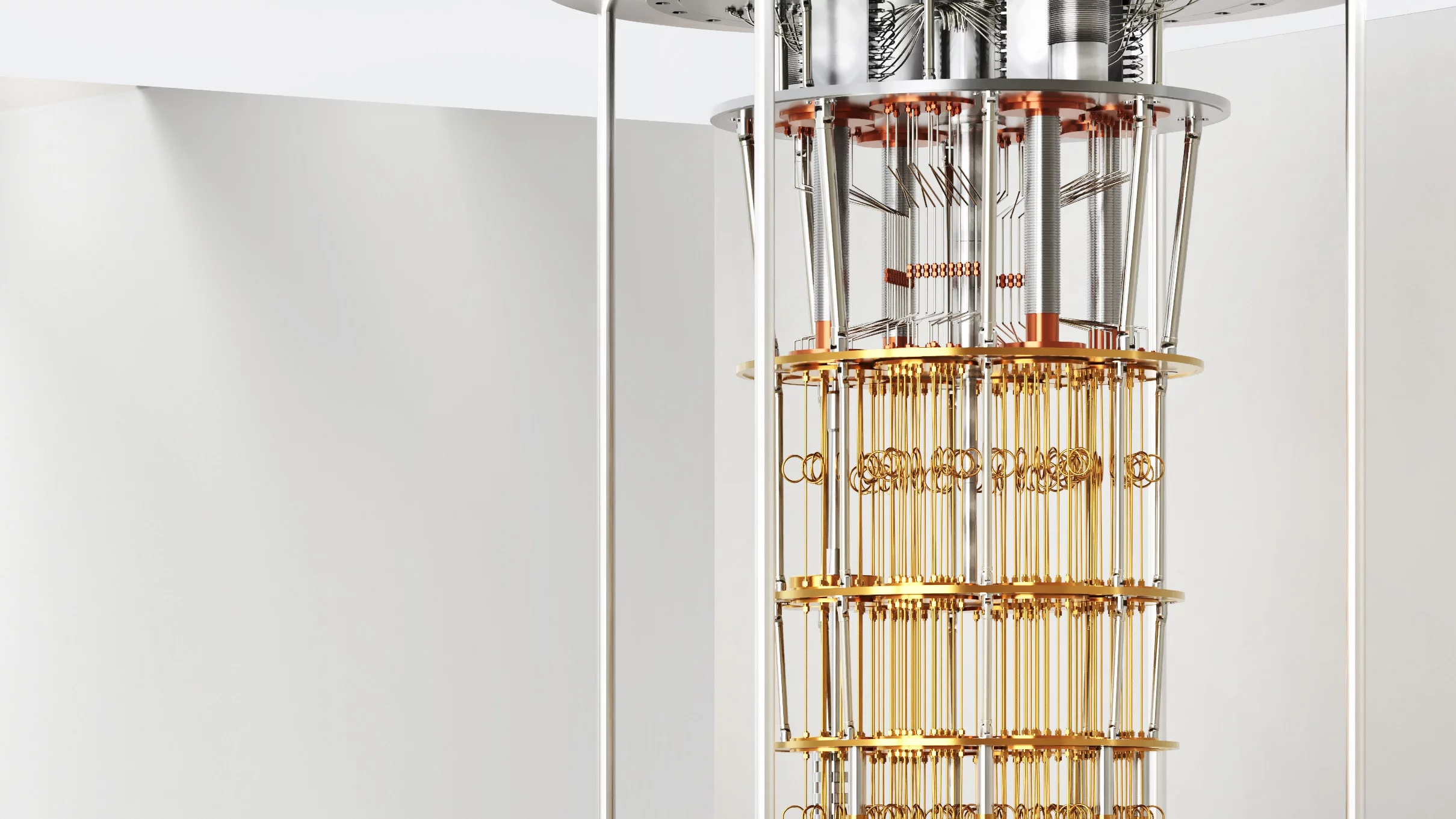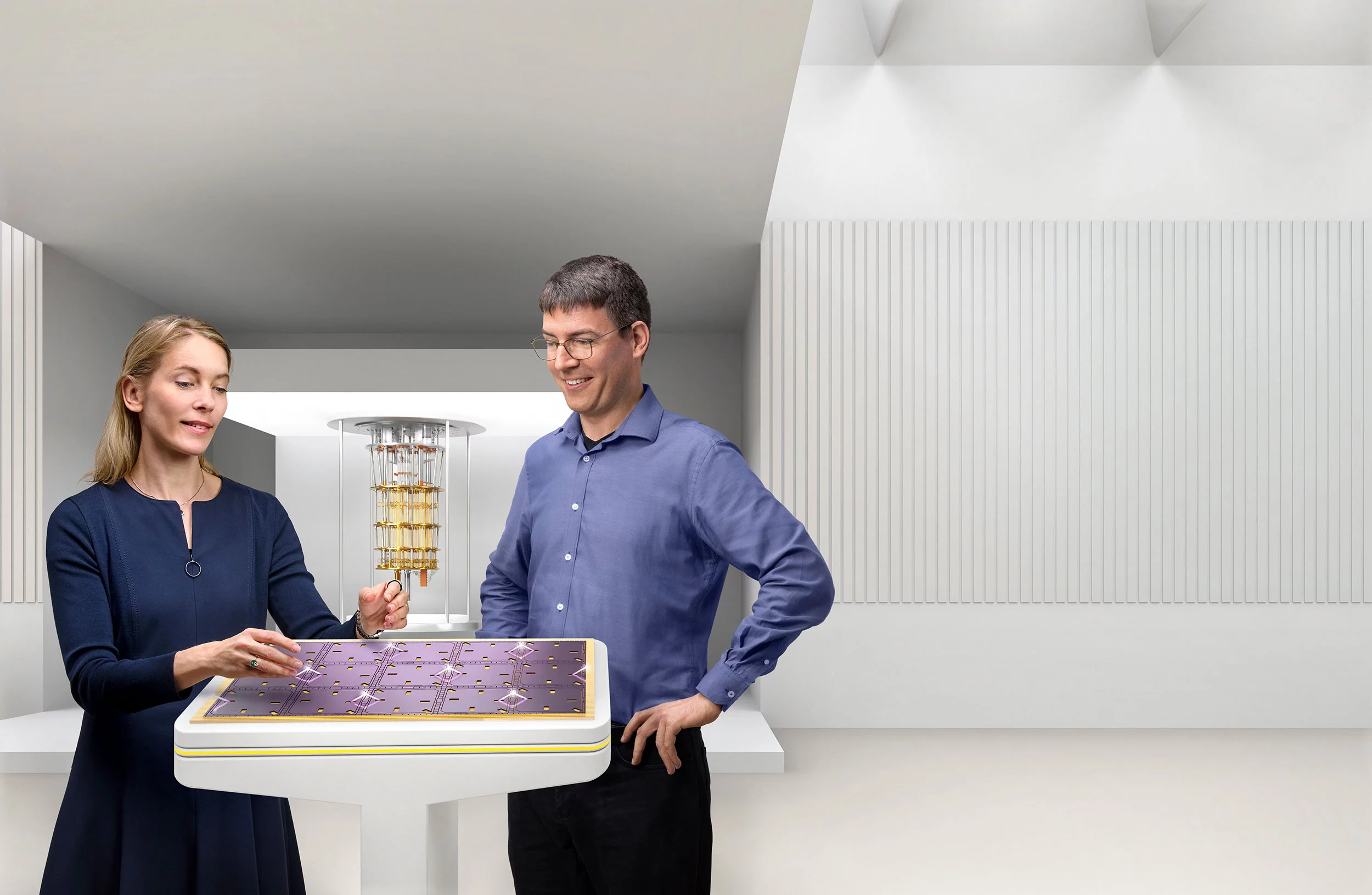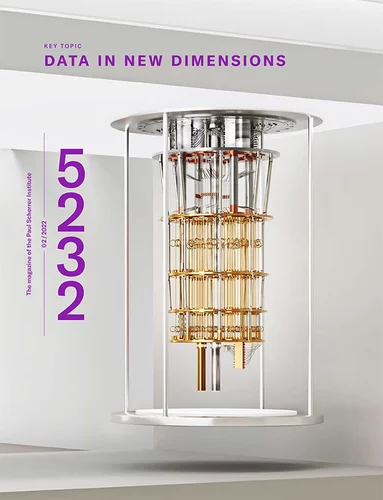PSI and ETH Zurich have co-founded the Quantum Computing Hub, where top researchers work together on concepts for quantum computers. One day these machines should comfortably outperform conventional computers in certain computing tasks.
If you were to make a list of the world’s leading researchers in quantum computing, Jonathan Home and Andreas Wallraff would be close to the top. These two physics professors from ETH Zurich are masters of their field – yet they are not alone: in recent years, quantum research expertise in Switzerland has developed to a level comparable with much larger nations. There are also numerous young companies developing quantum technologies, such as Zurich Instruments and ID Quantique.
All good, right? Not quite. “Quantum technology has taken a big step towards practical application,” says Gabriel Aeppli, head of the Photon Science Division at PSI. “For that, it now requires experts with capabilities that go far beyond what even a renowned university like ETH Zurich can provide – above all, engineers who can translate research results into functioning prototypes.” And this is where PSI comes into play. “A national laboratory like PSI unites all the skills needed for this scale-up,” says Aeppli. This means the transition from a basic experiment to a technology that can, in the foreseeable future, solve real – and eventually also commercial – problems.
For years, PSI has been proving it can do this at large research facilities such as the Swiss Light Source SLS and the X-ray free-electron laser SwissFEL, where technologies are needed that can’t just be procured anywhere. As a national laboratory, PSI benefits from the fact that experienced experts can work on complex challenges over a longer period of time. This is not the case with a research team at a university. “We have many talented scientists, but they have to leave the team after a few years, mostly after their doctorate,” says Jonathan Home. Therefore the kind of scale-up that PSI can accomplish would not be possible at ETH Zurich.
ETH Zurich and PSI recognised that the two institutions perfectly complement each other in the development of quantum computers. That’s why they jointly established the Quantum Computing Hub. Organisationally, this research institution is assigned to Gabriel Aeppli’s Photon Science Division and, within it, to the Laboratory for Nano and Quantum Technologies. The Quantum Computing Hub is housed on the PSI campus near Villigen, where a building has been upgraded for quantum research. Researchers there are pursuing different approaches to realising a quantum computer.
On the basement level, the team of Jonathan Home, Professor of Experimental Quantum Information, is now building quantum circuits based on ion traps. On the upper floor, Professor of Solid State Physics Andreas Wallraff is engaged with the same questions. However, he and his team are using ultracold superconducting components. Two more research teams are set to join this year, exploring other concepts for building quantum computers. From the current 20 researchers, the Hub is set to grow to 100 in five years. In addition, a clean room with nanofabrication facilities is being built close to PSI in the new Park Innovaare, where the researchers will produce their own qubits, the basis of every quantum computer.
Kirsten Moselund, who since February 2022 has headed the Laboratory for Nano and Quantum Technologies at PSI and thus the Quantum Computing Hub as well, is charged with organising this growth. A professor of Electronics and Microtechnology at EPF Lausanne, Moselund previously worked at IBM Research Zurich, located in Rüschlikon. There she conducted research on nanophotonics. “In the new hub, we are bringing together quantum technologies and a strong technology platform,” says Moselund. A real race has broken out for quantum computers, similar to the race for the first manned moon landing. Moselund sees the hub as being in an excellent starting position: “ETH Zurich and PSI complement each other very well. And with large research facilities such as SLS and SwissFEL, we have opportunities that others do not have, for example when we want to investigate defects in materials for future quantum chips.”
No universal and fault-tolerant quantum computers are commercially available yet. Devices such as those being developed by IBM and Google currently have just over a hundred qubits. Because each qubit can not only assume the states zero and one, but any arbitrary combination of states, and because the qubits are “entangled” with one another, a few dozen qubits can already process problems that would be too complex for microprocessors with billions of transistors. In the quantum computers demonstrated so far, however, only a few qubits are ever entangled at the same time, which limits actual computing power.
“Already today researchers are having fun with quantum computers,” says Cornelius Hempel, head of the Ion Trap Quantum Computing Group at PSI. There are questions in physics that can be solved with just fifty qubits. At ETH Zurich, Home’s team uses electromagnetic fields to confine groups of atoms in an ion trap and, by manipulating them with laser light, to have them interact and carry out logical arithmetic operations. PSI is planning microchips with dozens of ion traps between which ions can be pushed back and forth and which, together, form a larger quantum chip. Laser light fed into the chip via fine optical fibres manipulates the atoms, changing their energetic states, while electric fields move them back and forth. Identical by nature, atoms are perfect qubits – the challenge lies in controlling them.
For practical applications in industry, this is still uninteresting. For example, nitrogenase is an enzyme that bacteria use to fix nitrogen from the air, which acts as a natural fertiliser for plants. Today, as a hundred years ago, artificial fertiliser is produced using the Haber-Bosch process, which requires a great deal of energy. Knowing how the enzyme works and being able to replicate it would be a breakthrough for the global food supply. But this puzzle cannot be solved even with supercomputers. However, a quantum computer with a thousand error-free qubits could model the enzyme in just a million calculations.
The emphasis here is on “error-free” operation, because qubits currently calculate with an error rate of one percent, which is far too high. For comparison: a transistor only miscalculates once in 1027 (a number with 27 zeros) arithmetic operations. Logical qubits offer a way out of this impasse. These consist of several physical qubits and can detect and eliminate errors. Error correction has already been demonstrated on a small scale in the Wallraff and Home laboratories. And error correction is getting better with the use of larger and larger systems. For the nitrogenase problem, some estimates predict it would take about a thousand physical qubits for one fail-safe logical qubit, which means the number of qubits in the computer would need to be about a million.
So how to get from the 127 physical qubits recently demonstrated by IBM in one chip to a million qubits? That appears to be just a matter of scaling up fabrication. Unfortunately, there is currently no way to build larger and more complex systems without introducing more errors into the system. In this respect, all reports of success, such as those regularly disseminated by Google, IBM and Amazon, should be treated with caution. These are bugprone devices not yet ready to take direct advantage of more qubits. A desktop quantum computer that solves real problems will not exist in the next ten years, maybe ever. But the researchers are confident that commercial quantum computers are possible. Such a computer with millions of qubits would operate in a data centre alongside traditional supercomputers.
It is still not at all clear which qubit concept will prevail. In addition to superconducting qubits and ion traps, researchers around the world are still working on half a dozen other ideas – which will also be pursued at the Quantum Computing Hub, assuming there are promising concepts for their implementation. There may also be completely new options, speculates Cornelius Hempel. For example: “Who knows – maybe our colleagues at SLS or SwissFEL will find a new material from which we can build much better qubits.”
Switzerland needs a strong presence in quantum technologies.
For Kirsten Moselund, there is no alternative to the Quantum Computing Hub. “Switzerland needs a strong presence in quantum technologies,” the engineer insists. Commercial quantum computers, which Google, Amazon and others will probably make accessible as a cloud service at some point, are a black box that you’re not meant to look inside. Moselund: “To be able to use quantum computers sensibly, we need to know what’s happening under the hood. And that’s what we offer at PSI.”
Text: Bernd Müller
© PSI provides image and/or video material free of charge for media coverage of the content of the above text. Use of this material for other purposes is not permitted. This also includes the transfer of the image and video material into databases as well as sale by third parties.



